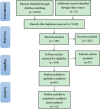Sexual violence against women remains problematic and highly prevalent around the world
- PMID: 37101173
- PMCID: PMC10134525
- DOI: 10.1186/s12905-023-02338-8
Sexual violence against women remains problematic and highly prevalent around the world
Abstract
Background: Sexual violence is far more prevalent in most societies than is usually suspected in daily life. However, no study has systematically summarized the global prevalence rate and the major outcomes of sexual violence against women.
Methods: We directed a wide-raging search in the PubMed, Embase, and Web of Science, catalogs since the beginning to December 2022 for relevant reports about the incidence of sexual fighting touching females. The occurrence frequency was assessed with a random-effects model. The heterogeneity was estimated with I 2 values. Differences by research features were assessed over subgroup evaluation and meta-regression.
Results: A total of 32 cross-sectional studies were included (a total of 19,125 participants). The pooled sexual violence rate was 0.29 (95% CI = 0.25-0.34). Subgroup analyses found that there was a higher rate of sexual violence against women in 2010-2019 period (0.33, 95% CI = 0.27-0.37), developing countries (0.32, 95% CI = 0.28-0.37), and interview (0.39, 95% CI = 0.29-0.49). The analysis found that more than half of women (0.56, 95% CI = 0.37-0.75) had post-traumatic stress disorder (PTSD) after experiencing sexual violence, and only a third of women considered seeking support (0.34, 95% CI = 0.13-0.55).
Conclusions: Nearly one out of every three (29%) women around the world has been a victim of sexual violence in their life. This current study investigated the status and characteristics of sexual violence against women, which could provide an important reference for police and emergency health services management.
Keywords: Global prevalence; Meta-analysis; Sexual violence; Systematic review; Women.
© 2023. The Author(s).
Conflict of interest statement
The authors declare no competing interests.
Figures
References
Publication types
MeSH terms
LinkOut - more resources
Full Text Sources
Medical




